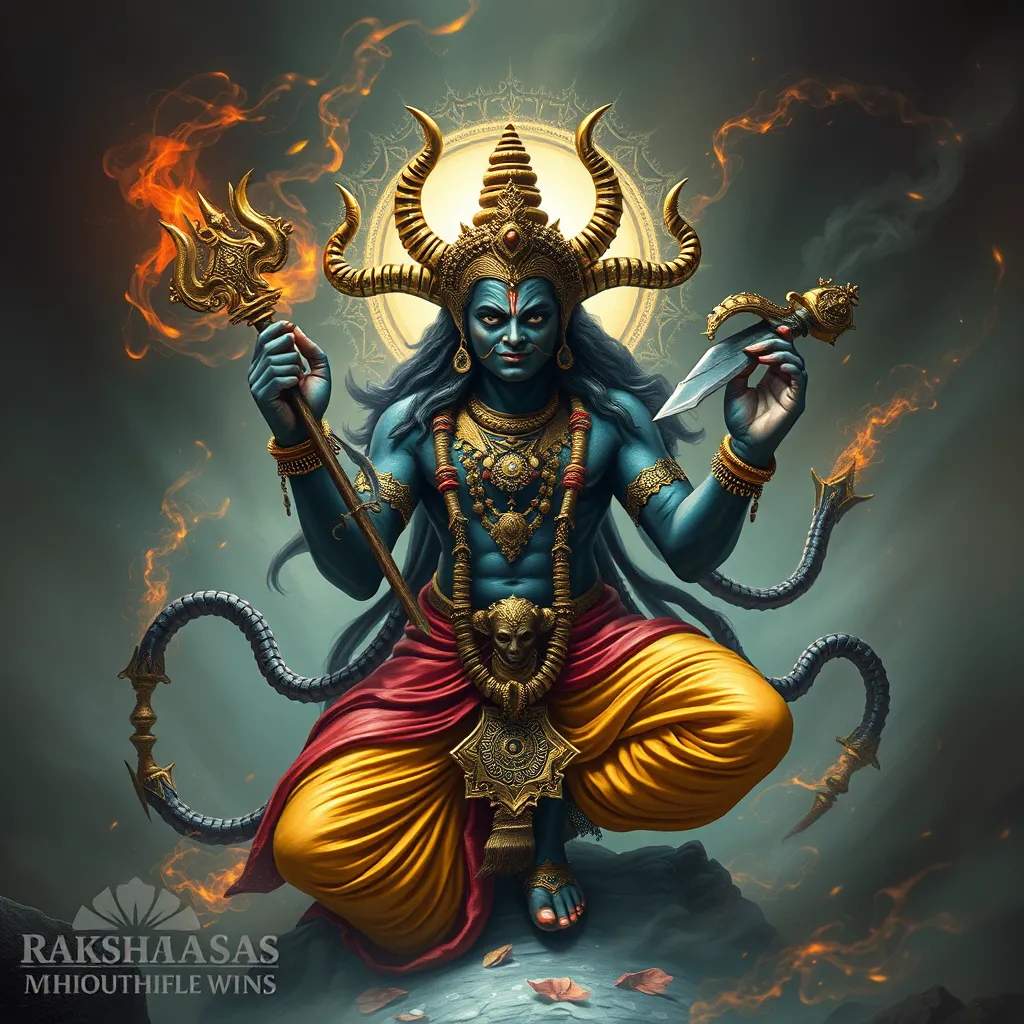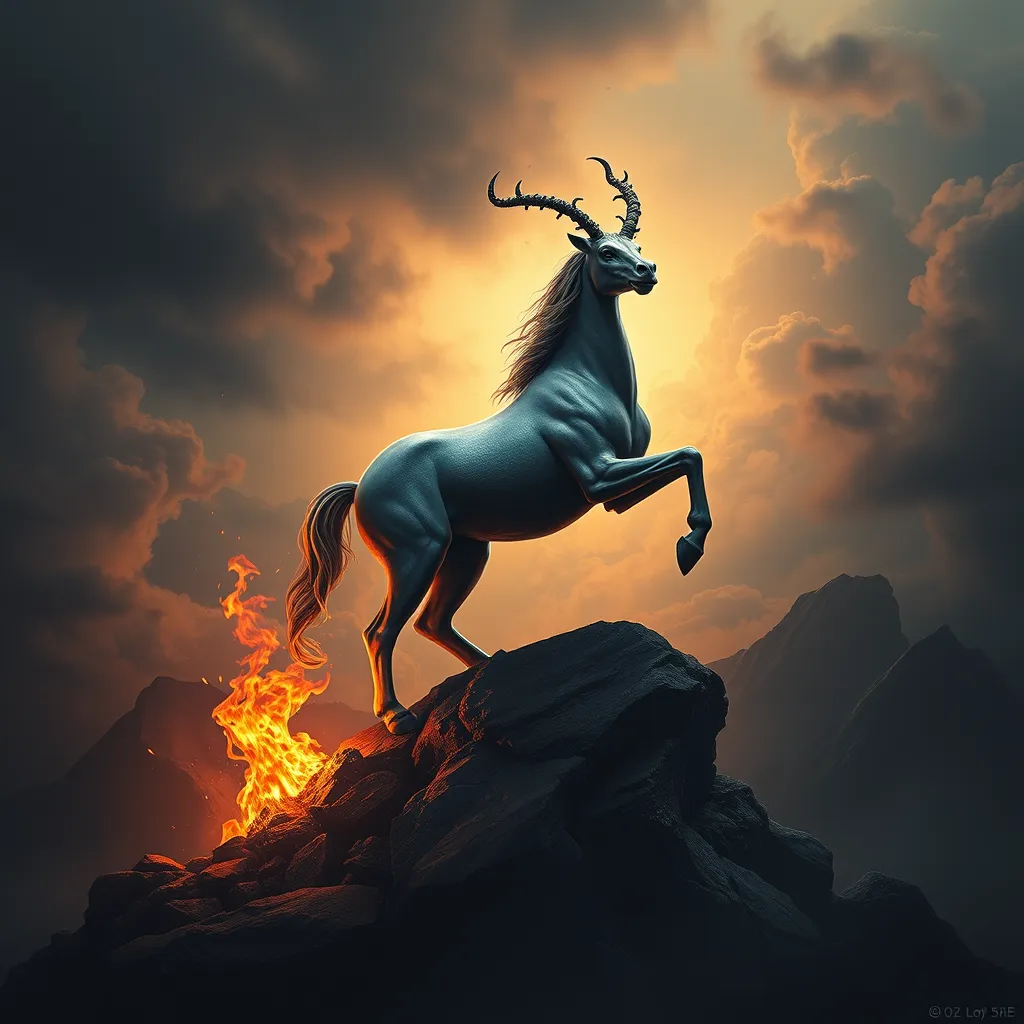The Rakshasa in the Bhagavata Purana: The Demonic Enemies of Vishnu
I. Introduction
The Bhagavata Purana is one of the eighteen Mahāpurāṇas, revered texts in Hinduism that delve into cosmology, mythology, and theology. It is particularly focused on the life and deeds of Lord Krishna, an avatar of Vishnu, and serves as a key scripture for understanding the principles of devotion (bhakti).
Within this rich tapestry of narratives, the concept of Rakshasas emerges as significant figures representing demonic forces opposing the divine. Rakshasas embody chaos and malevolence, often standing in stark contrast to the order and righteousness upheld by Vishnu and his avatars.
Understanding Rakshasas within the context of Vishnu’s narratives not only enhances our comprehension of the stories themselves but also reveals deeper moral and philosophical lessons relevant to the eternal struggle between good and evil.
II. Defining Rakshasas
A. Etymology and cultural significance of Rakshasa
The term Rakshasa originates from the Sanskrit root raksha, meaning “to protect” or “to guard.” However, Rakshasas are often perceived in a negative light, embodying traits that deviate from the righteous path.
B. Characteristics and attributes of Rakshasas
- Physical Appearance: Rakshasas are often described as having fearsome, monstrous forms, with multiple arms and grotesque features.
- Supernatural Powers: They possess magical abilities, including shape-shifting and illusion, which they use to deceive and terrorize.
- Mischievous Nature: Rakshasas are known for their cunning and deceit, often employing trickery to achieve their goals.
- Antagonistic Role: Their primary purpose in narratives is to challenge the divine order, often directly opposing deities like Vishnu.
C. Their role in Hindu mythology and cosmology
In Hindu mythology, Rakshasas serve as essential antagonists who create obstacles for deities and heroes. Their presence highlights the necessity for divine intervention and the ultimate triumph of good over evil.
III. The Origins of Rakshasas in Hindu Mythology
A. Creation of Rakshasas according to various texts
According to some accounts, Rakshasas originated during the churning of the ocean (Samudra Manthan), a mythological event that produced various celestial beings, including both gods and demons.
B. The relationship between Rakshasas and other supernatural beings
Rakshasas are often depicted alongside other demonic entities such as Asuras and Pisachas. This relationship highlights their role as adversaries in the cosmic struggle against the divine.
C. Historical context of Rakshasas during the Vedic period
In the Vedic texts, Rakshasas are frequently mentioned as beings that disrupt rituals and threaten the spiritual practices of the Aryans. Their portrayal reflects the broader themes of chaos versus order in ancient Indian society.
IV. The Role of Rakshasas in the Bhagavata Purana
A. Key narratives involving Rakshasas
The Bhagavata Purana contains numerous narratives featuring Rakshasas, underscoring their persistent opposition to Vishnu and his avatars.
B. Major Rakshasa characters and their significance
- Hiranyakashipu: A powerful Rakshasa king known for his enmity towards Vishnu, whose story culminates in his defeat by the Narasimha avatar.
- Ravana: Although more prominently featured in the Ramayana, his character also resonates within the context of the Bhagavata Purana, representing unyielding ego and arrogance against divine authority.
- Putana: A female Rakshasi who attempted to kill infant Krishna but ultimately met her demise, illustrating the futility of evil against divine protection.
C. The interplay between Rakshasas and divine beings, especially Vishnu
Rakshasas often serve as catalysts for divine intervention, prompting Vishnu to descend to Earth in various forms to restore dharma (righteousness). This interplay reveals the cyclical nature of good versus evil in Hindu cosmology.
V. Rakshasas as Adversaries of Vishnu
A. Analysis of specific encounters between Vishnu and Rakshasas
Vishnu’s encounters with Rakshasas are marked by intense battles that symbolize the conflict between good and evil. For instance, in the story of Hiranyakashipu, Vishnu’s avatar Narasimha emerges to protect his devotee Prahlada and vanquish the tyrant.
B. The thematic implications of Vishnu’s battles with demonic forces
The battles between Vishnu and Rakshasas serve as allegories for the struggles faced by devotees in their pursuit of righteousness. These narratives emphasize the belief that divine protection prevails over malevolent forces.
C. Symbolism of Rakshasas in the struggle between good and evil
Rakshasas symbolize the darker aspects of human nature, such as greed, anger, and ignorance. Their defeat by Vishnu signifies the triumph of virtues such as love, compassion, and devotion.
VI. The Transformation of Rakshasas
A. Instances of redemption and transformation in the Bhagavata Purana
Some narratives within the Bhagavata Purana illustrate the potential for redemption among Rakshasas. Characters like Ravana, despite their wickedness, often possess qualities that can lead to transformation.
B. The philosophical perspectives on evil and redemption
These stories provoke reflection on the nature of evil and the possibility of redemption, suggesting that even the most malevolent beings can find a path to salvation through devotion and repentance.
C. Contrast between irredeemable Rakshasas and those who find salvation
The distinction between irredeemable Rakshasas and those that can be transformed underscores the complexity of moral choices and the fluidity of human nature in the face of divine grace.
VII. Contemporary Interpretations and Relevance
A. The portrayal of Rakshasas in modern media and literature
In contemporary storytelling, Rakshasas have inspired a range of portrayals, from fearsome villains in movies to complex characters in literature. Their narratives continue to resonate, reflecting ongoing struggles between good and evil.
B. The influence of Rakshasa mythology on contemporary spirituality
The themes of Rakshasas in Hindu mythology have influenced modern spiritual practices, emphasizing the importance of overcoming internal demonic qualities to achieve self-realization.
C. Lessons drawn from the narratives involving Rakshasas in today’s context
Modern audiences can draw valuable lessons from the narratives of Rakshasas, particularly regarding the inevitability of conflict between opposing forces and the enduring hope for redemption and transformation.
VIII. Conclusion
In summary, Rakshasas play a crucial role in the Bhagavata Purana, serving as formidable adversaries to Vishnu and embodying the eternal battle between good and evil. Their narratives offer profound insights into the nature of morality, the potential for redemption, and the significance of divine intervention in the human experience.
The enduring impact of these stories on Hindu thought continues to inspire both spiritual seekers and scholars alike, reminding us of the moral and philosophical lessons inherent in the struggle against demonic forces.



